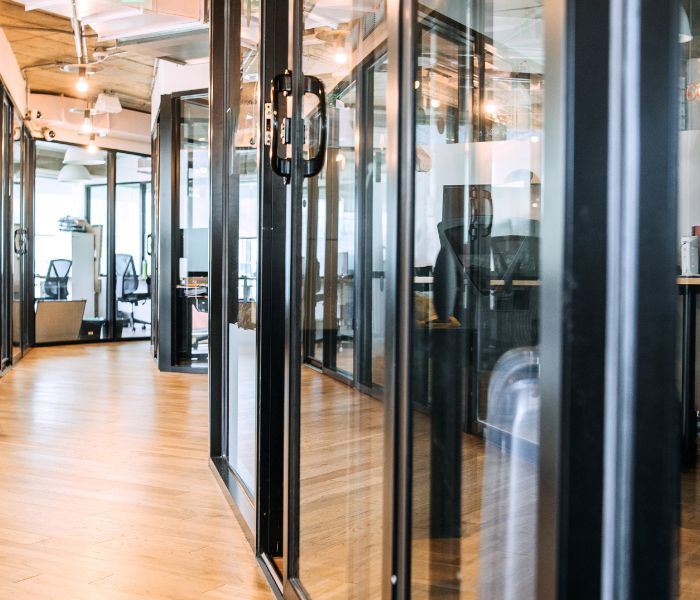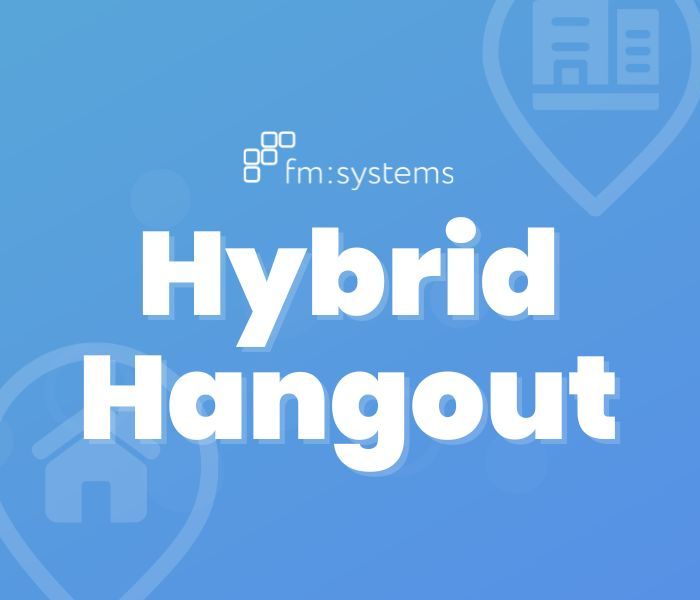There are many areas to address when planning to bring personnel back to the workplace. New requirements due to social distancing, cleaning, and safety have brought challenges to facility managers to be able to plan for and execute a return-to-work strategy.
Technology will certainly be required for this planning, whether using simple spreadsheets and diagrams or procuring and implementing new hardware and software solutions. From initial preparation to execution and ongoing monitoring, there are several technology options to consider in the process:
1). Planning
Companies are forming teams to help plan to return to the workplace that often includes namely Human Resources (HR), Information Technology (IT), Security, Legal, and Finance. Facilities play an essential role in this planning as well to help prepare the workplace and how it is to be used to provide a safe and practical experience for personnel.
Social Distancing
One of the biggest drivers behind a new design and preparation of the workplace for re-occupancy is social distancing. This proven tactic to minimize the spread of infection must be implemented in several ways at a facility, including:
Building/Floor Maximum Occupancy Restrictions
Most companies are planning a phased approach to bringing in different percentages of employees to the workplace. This requires categorizing and selecting certain personnel for their eligibility and scheduling. This is an area where technology has a significant role. Departments and personnel data must be able to be listed, sorted, flagged, and displayed along with graphical floor plan layouts with space capacities to help determined thresholds and occupancy.
An Integrated Workplace Management Systems (IWMS) such as FMS:Workplace can be used in multiple ways to help in this area. Department and personnel scenario plans can be evaluated quickly in a stacking and blocking environment, personnel can be flagged for return eligibility, and personnel schedules and reservations, even to their existing spaces, can be made. These can all be done without the use of an IWMS, but would require significant time and effort pulling together multiple data sources, laying out CAD floor plans, and managing master spreadsheets in an ever-changing environment.
Workspace Distances
The physical workspaces need to be evaluated to determine their proximity to personnel around them. The suggested six feet of distancing requires layout on a floor plan CAD drawing or IWMS plan. Once identified, workspaces can be designated for appropriate use full-time or on an alternating pattern.

Distancing requirements, along with the pandemic causing an unexpected 100% work-from-home workforce, have shown that it is possible for some personnel to effectively work more outside of the workplace. For companies that have vacancies or visitor/guest workstations, a Hoteling solution such as FMS:Employee could be a great option to bring back those workers who do not need full-time space use in the workplace.
Maximum Room Capacities
Meeting rooms and other activity-based spaces where collaboration typically takes place will need to be adjusted for lower capacities. While some companies have talked about removing chairs to deter overpopulating these spaces, technology can also play a role with Room Scheduling software, even if only via Microsoft Outlook or Google Calendar to change room capacity values.


Using a Room Scheduling tool such as FMS:Employee, room reservations can also factor in setup/breakdown times (normally used for catering) to automate scheduling cleaning/disinfecting of the room between uses.
Limited Common Area/Space Use
Some common spaces (e.g., cafeterias, nurturing rooms) and other personal “me” spaces such as phone booths may be required to be restricted on an initial return to the workplace. Physical signage will most certainly be used to help reinforce limited or restricted use of certain spaces/areas.


Commercial digital signage, such as those offered by Samsung, can be used in the workplace for reinforcement and messaging, though kiosks and other touch-enabled equipment should be considered for removal.
2). Workplace Preparation
How do facilities change the workplace to provide a safe and functional work environment, especially in the first phase of returning to work?
Cleaning
The way facilities clean their workplace is obviously going to be very different. There are multiple areas of impact, starting with the HVAC system for the building. There are mixed messages about specific HVAC cleaning, but several organizations are considering circulating more outside air and paying attention to filters.
For indoor sanitization, foggers and electrostatic sprayers are available in different form factor sizes and types. Deep cleaning schedules are being added for the end of days/weekends and some companies are asking their staff to wipe down workstations after use as well.


The emergence of the Internet of Things (IoT) brings technology to use with the ability to automatically reorder/notify when devices such as hand sanitizing stations are running low. These touchless hand sanitizing stations, as available with PURELL SMARTLINK Technology, along with other points of interest, can be identified on a CAD drawing or IWMS floor plan as well.
Eligibility
In addition to determining when an employee has been designated to use the facility again, it is important to determine that they are also fit for work. The most common way being discussed is the combination of health question screening for COVID-19 along with temperature checks.
Technology comes into play first with temperature checking hardware from basic touchless thermometers all the way up to infrared and full-body screening systems. These have varying order of magnitude costs and capabilities.
Screening questions are important to be agreed to at some level and are most commonly being asked on entry to the building. Questions on screening must be answered properly or the employee is to be turned away and asked to stay and work at home.
Technology can be used from simple spreadsheets to mobile Apps as with FM:Mobile that can flag a person for authorized entry based on successfully answering the questions asked. This data should be available to be easily reported on and stored. However, when using technology to clear a person for building entry, it is important to protect personal health information because of HIPAA regulations.
Download our Safe Space Playbook to learn more about how technology can help prepare your workplace for re-entry.
Stay tuned for Part 2 of How Technology Can Help Transition Back to the Workplace.
Written by: Dan Lorenz | President AMS CAD+CAFM Solutions
About AMS CAD + CAFM Solutions
AMS CAD + CAFM Solutions (AMS) is a leading Premier Certified Business Partner with FM:Systems of 18 years that specializes in consulting, design, and implementation of facilities management software and technology solutions. AMS is a full-service, goals-oriented CAFM/IWMS implementer that partners with customers to bring them best-in-class FM applications. Our innovative solutions combined with our industry experience have helped many of FM:Systems’ largest and most successful customers including corporate facilities, pharmaceutical/research companies, higher education campuses, and health care institutions.
For more information visit http://www.amscad.com













